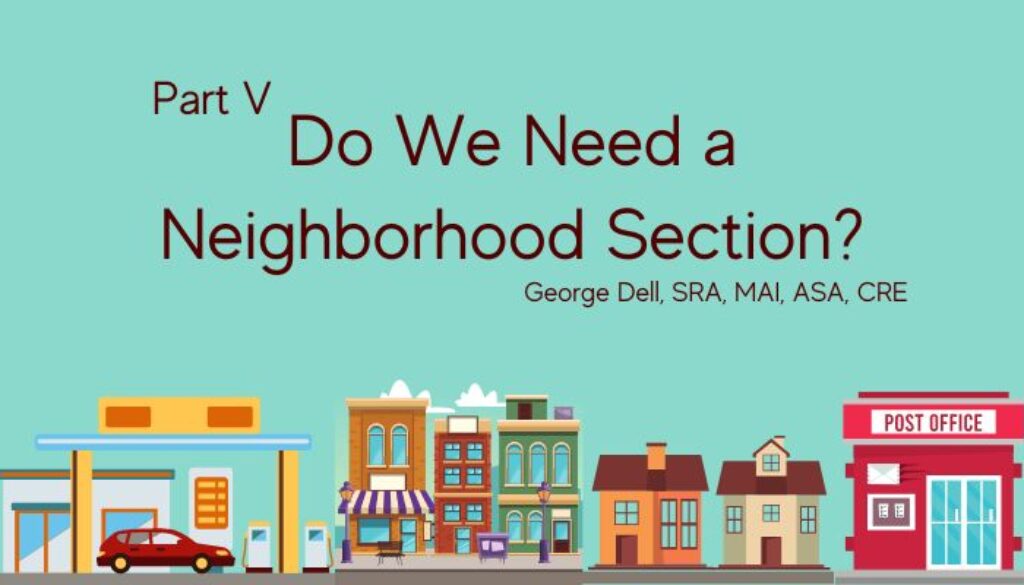Neighborhood” seems like an obvious choice for analysis. But is it? (Part 5 of a series.)
The knee-jerk reaction to this question is that obviously we need it. It is a starting core of analysis. It’s what we were taught. It’s required for our license test. Leaving out a neighborhood section (form or narrative) would be cause for complaint, or even a ‘violation’ of USPAP!
But comparable and competitive sold properties come from both the outside and the inside of neighborhood boundaries.
How about “market area?” Is the market area the neighborhood? Or does the market area include other comparable neighborhoods? If so, how do we determine if another nearby neighborhood is comparable?
My experience tells me that there is little or no appraiser education which directly teaches appraisers how to compare neighborhoods. “I know a good neighborhood when I see one!”
So, what would be the positive benefit of comparing neighborhoods? Aha! Now we have a possible use for neighborhood analysis! A location adjustment!
So, what do we need to estimate or calculate a location adjustment between two neighborhoods?
First, we need to face yet another groupthink and assumethink fallacy of (traditional) appraisal. If a neighborhood is a group of complementary land uses, then average sale prices, site sizes, and improvement sizes are non-sensical – if you include apartments, gas stations, public parks, houses, and apartments together. Nonsensical.
Our ingrained appraisal thinking avoids admitting that we are not looking/comparing at the whole of “complementary uses” as claimed. We are mentally reducing the “neighborhood” to a use roughly competing with the subject (say SFR). This equivocation is embedded into the thinking of vocational appraisers, as taught and thought by professional teacher appraisers.
When we say “neighborhood,” is this what we really mean? The current SFR URAR form asks for choices which do not really help get to the real need: a quantification of “market conditions” or “time adjustment.”
The positive benefit of “complementary uses area” analysis may be just to satisfy the need for “more comps” when there are “not enough” inside the neighborhood. (Never mind that a comp from outside may actually be a better, closer “true” comp than any within the neighborhood.)
Neighborhood boundaries, description and condition, value trends, demand/supply, and even marketing times may have little to do with the same measures when just for SFRs, or just for condos.
A group of complementary uses does not correlate with the CMS© (Competitive Market Segment) of the subject property. It does not. It only resolves one, and only one of the five dimensions of similarity, as analyzed in EBV© (Evidence Based Valuation).
Modernized appraisal analytics demands attention to data science similarity algorithms. The outdated method of picking comps is subjective, vulnerable to bias, and prevents optimal accuracy and sureness.

Ban Multiple Regression? - George Dell, SRA, MAI, ASA, CRE
February 8, 2023 @ 1:16 am
[…] the population to be studied is not the census tract, or the zip code, or the neighborhood, or the whole town. It is certainly not all the houses, or properties in an area. It is just […]